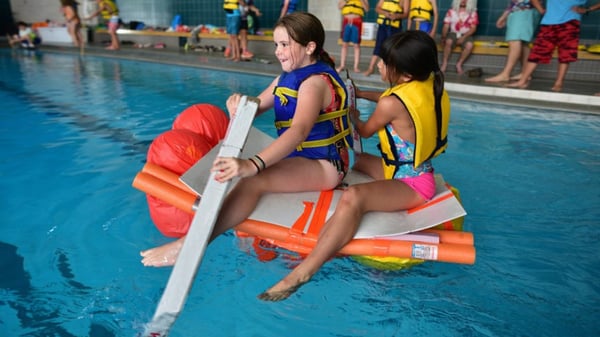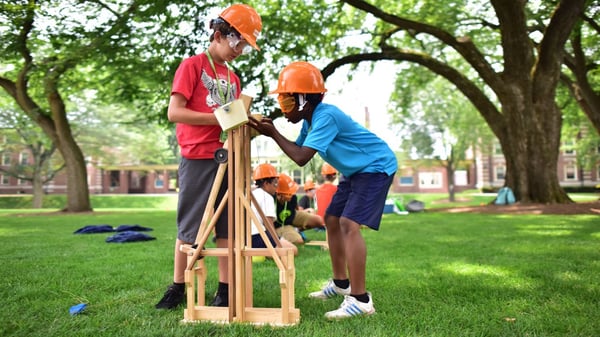Many Paths to Engineering

What do Star Wars Lego robots, sustainable urban planning, and a complex machine designed to paint your dreams have in common? At the heart of each of these imaginative projects is a challenge to our students -- use the principles of engineering to create something extraordinary and original. We’ll give you the materials and the tools, you create the ideas, bend the rules, and execute the plan.
At EXPLO, engineering takes many shapes, forms, and flavors, and to reduce it to just one “thing” does a disservice to the expansiveness of the field. If we reframe the way that we think about the concept of engineering, its applicability becomes multifaceted and universal to the way we think about teaching and learning.
Finding our Footing: Engineering Foundations
At EXPLO at Wheaton, we offer courses that delve into the foundational aspects of engineering. Our courses that focus on mechanical or physical engineering ask students to work with their hands, put physical pieces together, and construct something in order to solve a problem.
Build a bridge out of newspaper and foil to cross over a 400-foot waterfall. Construct a contraption that will protect an egg that’s being flung 500 feet through the air from a slingshot. Design a way to stop a popsicle from melting (as you’re eating it). These are just a small sampling of the engineering tests that await in our Creativity Challenges and Creative Problem Solving courses. In these courses, students learn the steps of the design process, and go through the cycles of inventing, problem solving, prototyping, and evaluating their original work.
We also offer courses and workshops that highlight technological or computer engineering, exposing kids to the world of programming — that magical idea that a specific language of letters and numbers combined in the exact right sequence can solve a technical problem, create something new, or make a video game character jump across the screen. In EXPLO's Introduction to Computer Programming course, students move through the process of identifying a problem, developing a solution, implementing code to solve it, and then managing the continued development of the system.

Technically Whimsical
Each of these courses teach students technical engineering skills that are immediately recognizable and essential to the design process. At the same time, we are always striving to shape a curriculum that encourages students to think of engineering as a creative and whimsical process.
That’s why we also offer courses like Mini Golf Engineering, Tiny Home Engineering, or the Ball Run Engineering workshop that stretch our students to be both the dreamers that come up with an idea and to be the engineers that design a complex solution to execute their plan. That’s why we invite kids in grades 2-7 to work with littleBits™ and think about programming, but also offer a course like Art + Engineering, where students use simple materials to build complex machines that can illustrate an idea.
“For many of our students, the process of having complete agency over designing the solution to a problem all by themselves is a totally new experience, and it’s incredibly empowering," says Kristi Jacobi, director of teaching and learning at EXPLO. "That’s why kids are so excited about these diverse engineering offerings — there’s something for everyone, and they become the creators.”

There is whimsy and play built into the engineering challenges we create as we strive to expand the idea of what it means to be an engineer. The truth is, if we step back to look at the bigger EXPLO picture, an engineering mindset becomes the lens through which we focus so many of our courses and workshops, including those that, to others, may not fall into a more “traditional” engineering category.
That’s why kids are so excited about these diverse engineering offerings — there’s something for everyone, and they become the creators.
“Design thinking — identifying a problem, brainstorming a solution, building a plan, testing, trying, remaking — this sequence of problem solving is apparent in most of our classes in some shape or form,” Jacobi says. Universally, people are recognizing that engineering, problem solving, and creative thinking are integral skills in many professional and academic fields. We hear that, and we want to take things one step further.
To us, engineers are individuals who are comfortable with practicing what it means to fail at something, to learn from that experience, and to persevere and try again. To us, engineers are empathetic human beings who, through the process of designing for someone different than themselves, learn to appreciate and understand others’ perspectives. To us, engineers are people who advocate for themselves, who wield an idea with hope and intention, who come together as a group to solve challenges, and who seek ways to better the world.




